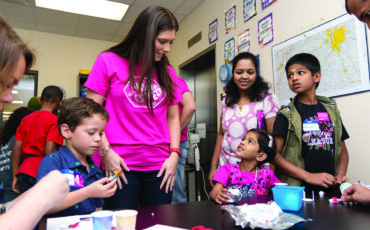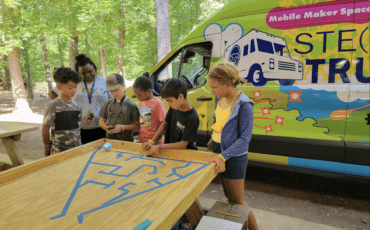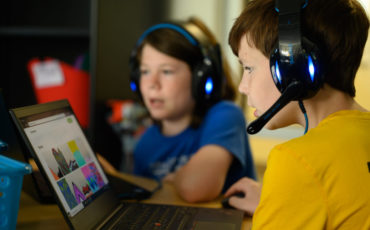Turn Up the STEAM

Things around us — inside the house, in the backyard, at the store — are opportunities to explore and ask questions. Creating a STEAM zone that naturally promotes making learning a lifelong pursuit at home is easy with these ideas.
STEAM up your screen time. Find YouTube channels on STEAM, look up family projects online, watch documentaries or science shows and download educational apps.
Check out online resources. Try code.org or girlswhocode.com for coding prompts, pbskids.org/designsquad or pbs.org/show/science-kids for projects, artsandculture.google.com for a look at famous artworks or coolmath4kids.com for tons of math games.
Think about gifts. At holidays and birthdays, consider buying age-appropriate science gear, science kits and books as gifts to inspire learning while playing.
Head to the backyard. Get your hands dirty with a garden. Plants need different amounts of space, sunlight, soil and water, so where should your child start digging? Study the growth of the plants and what happens to them depending on the weather.
Experiment with building. Try wooden blocks, K’nex, Lincoln Logs, Tinker Toys or Duplo bricks. Build edible structures with cheese, grapes or marshmallows and toothpicks.
Read about it. Have a STEAM-themed bedtime story. Check out “The Questioneers” or “Robotastic!” series. Pick up different activity books for experiments and projects you can do at home.
Consider a subscription box. With supplies and instructions mailed monthly, they keep learning interesting. Check out stevespanglerscience.com/club, creationcrate.com, bitsbox.com or stemdiscoveryboxes.com.
Hold a game night. Board games can have a STEAM element while indulging your family’s competitive spirit. Try Monopoly or Life for money management skills, learn about the environment with Planet, explore biology with Cytosis, get creative with Pictionary, or build train tracks with Ticket to Ride.
Go on a walk around the neighborhood. In the spring, so many plants and flowers are blooming! What do you spot growing first?
Explore with chores. Keeping a tidy house is a STEAM activity! Look online for using household items to create cleaners, and hypothesize why surfaces need different cleaners — why can’t you use glass cleaner on everything?
Uncover STEAM in one activity with baking. Science: Discuss chemical reactions when mixing ingredients together. Technology: Look up a recipe online or create a video of your time in the kitchen. Engineering: Discuss how the electric mixer works or build a tower out of the cookies you bake. Art: Use different colored icing to decorate cookies. Math: Double or halve the recipe. How does this impact cooking time and how much you need to spend at the store?
By the Book
Use these project-based books to spark your child’s desire to learn.
Awesome Science Experiments for Kids: 100+ Fun STEAM Projects & Why They Work by Crystal Chatterton
Use the hands-on science experiments in this book to show kids the basics of the scientific method. Build a Fizzy Rocket, create a Magnet-Powered Car, read the time with a Pencil Sundial and more. Part of the Awesome STEAM Activities for Kids book series, check out the other books in the series for physics, engineering, kitchen science and more.
This step-by-step guide contains tons of awesome STEAM activities to help kids engage in these subjects and spark their creativity and curiosity. With hands-on mini projects, kids will complete cross-curricula activities to help them make connections across STEAM.
Explore a year’s worth of STEAM projects that’ll keep your kids entertained. Created by an MIT engineer, educators, designers and homeschooling experts, this ebook will inspire enthusiastic learners. Seasonal books, such as STEAM Kids Christmas and STEAM Kids Valentine’s Day, along with other activity books, like STEAM Kids in the Kitchen, are also available for more year-round fun.
100+ STEAM Activities Kids Won’t Learn in School!
For kids ages 8-14, move through this activity book with hands-on projects that start small, but grow with your child for building everything from a Wind-Powered Boat to an Air Hockey Table.







